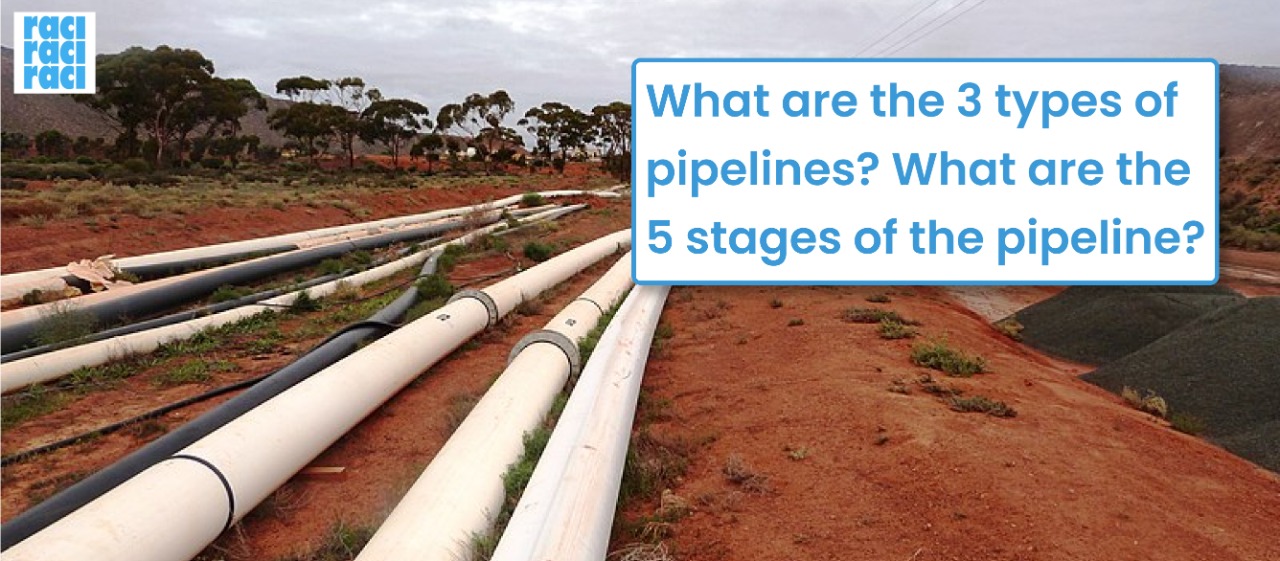What are the 3 types of pipelines? What are the 5 stages of the pipeline?
Installing pipelines, whether it is a gas pipeline in India or an oil pipeline, is a difficult job. Pipelines go through a number of stages during their construction and installation. Before we go ahead and discuss these stages let’s discuss what are the types of pipelines.
What are the 3 types of pipelines?
Gathering - Most natural resources are not immediately ready for use after being extracted. Before they can be used by the consumer, they need to be processed. Pipeline installation companies use gathering pipelines to deliver oil or gas from its source to the plant or storage tank for further processing. As they carry gas or oil that needs to reach the initial treatment facility as soon as possible, these pipelines are relatively short in length. Since extraction of resources and initial processing should be done as quickly as possible, it makes sense to minimize the amount of time between the two.
Transportation - Although all pipelines are used to transport natural resources, for long-distance across cities, states, and countries transportation pipelines are used. They are the largest pipelines that operate under high pressures. The oil pipeline in India uses pump stations. Link seals are used when these pipelines pass through a barrier. It helps create a permanent seal so that no external particle can enter the main pipeline. Apart from defective welding, another reason for transportation pipeline failure can be corrosion. When the first sign of trouble appears in a long transportation pipeline, detecting a leak can take a considerable amount of time.
Distribution - Once the product has reached the final destination, the pipeline for distribution takes over. This type of gas or oil pipeline in India delivers the final product to homes and businesses. It is their task to deliver the resources to their end destinations, such as industrial, commercial, and residential areas. There are 2 types of distribution pipelines- mains and service. 'Mains' are distribution pipelines that are located between high-pressure transportation pipelines and low-pressure service lines. They are sealed using end seals. Service pipelines are narrow pipes that connect to a meter and deliver to individual customers.
There is no one type of pipeline that is more important than the others, as they all work together to accomplish the same goal.
What are the 5 stages of pipelines?
Stage 1: Planning - The first stage is the planning stage. Once the economical viability is confirmed, the initial scoping phase begins. Pipeline installation companies start preparing the estimate for volumes and identify the start and endpoints Planning helps to determine the diameter of the gas or oil pipeline and facilities required to execute. Following steps are taken
Gathering data of the site
Deciding the route of the pipeline.
Establishing the structure of the pipeline
Picking the location for the additional facilities
Gathering data and assessing the environmental impact
Strengths and threats analysis
Stage 2: Approval - Before constructing any oil or gas pipeline in India, regulatory approval has to be taken. It is important to provide all the necessary information in the application. Information on the pipeline's route must be provided. The report must cover the consultation and assessment details along with the pipeline proposal. A mitigation plan for environmental impacts must also be provided by pipeline proponents which shall also cover the pipeline rehabilitation plan.
Stage 3: Construction - Long pipelines are constructed in segments, with one segment completed before the next is built. Construction includes site survey, transportation of pipelines to the location, trenching, and providing other materials like link and end seals to support the pipeline joints.
Stage 4: Installation - Before the pipeline is ready to transport the fuel, it needs to be installed to ensure that it is properly lowered into the trench. The installation also involves covering trenches with soil and restoring the land to its original form.
Stage 5: Pipeline rehabilitation - The safety of oil and gas pipelines is of the utmost importance. The prevention and detection of ruptures and leaks is extremely important. An underground pipeline leak repair needs to be performed as soon as the leak is detected. One of the major reasons for leaks is corrosion. Many preventive measures are taken by the pipeline installation companies. Underground pipelines are covered with tape and adding corrosion inhabitants to the fluid.
Pipelines are lifelines that transport natural resources to consumers. Material transportation has a major impact on pipeline safety. RACI pipeline provides state-of-the-art machinery and technical expertise to construct and install industrial pipelines for oil, gas, and water while maintaining all the necessary environmental safety protocols.
Read More...
Also, Visit Here Repairing Underground Pipeline Leaks: Some Good tips


.png)
.png)
Comments
Post a Comment